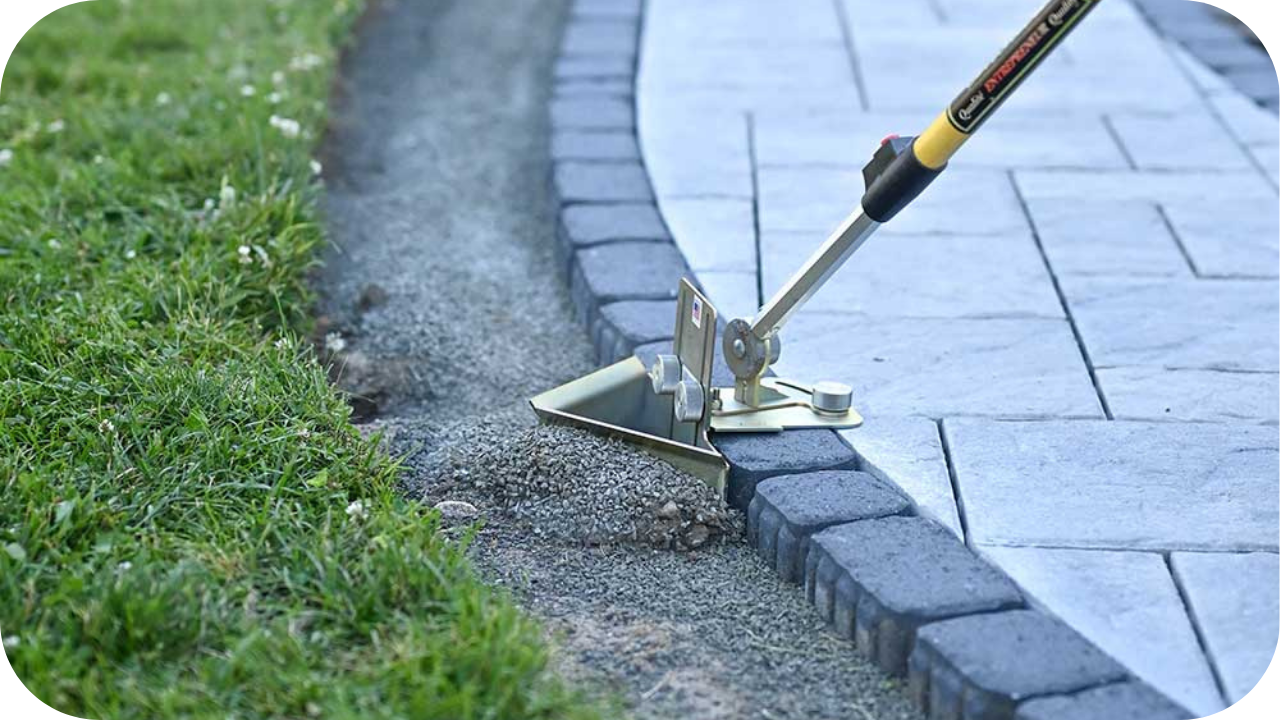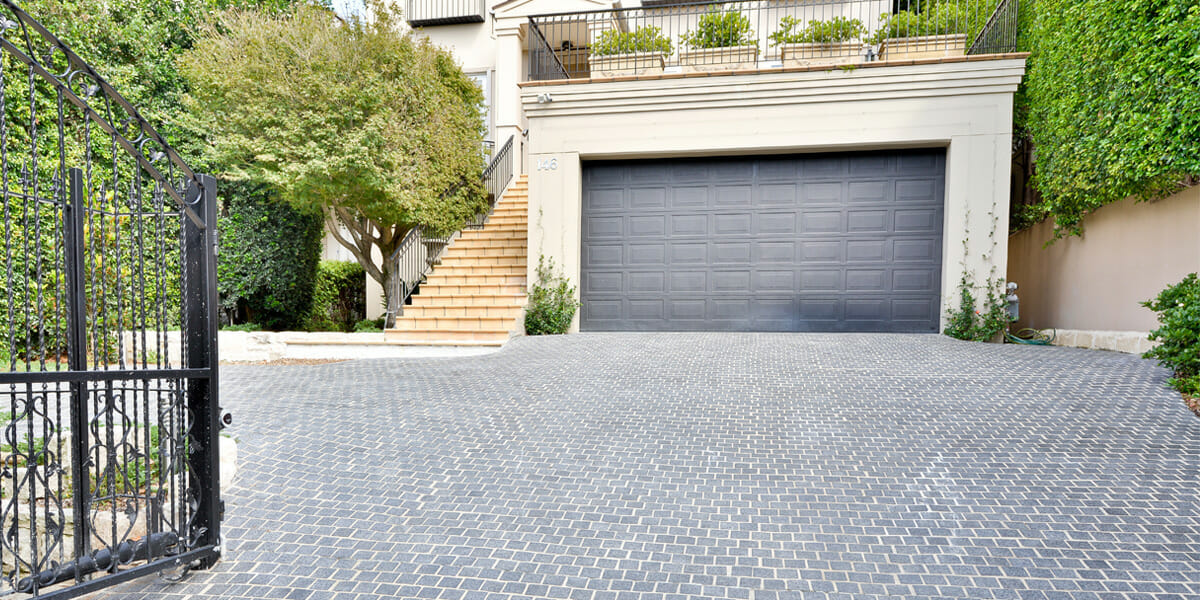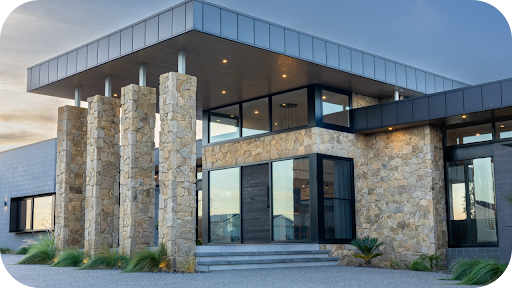
Concrete curbing plays a vital role in paver installations, ensuring both durability and aesthetic appeal.
Choosing the right time to install a curb can significantly impact the stability of your pavers and the overall design. Installing a curb at the appropriate stage not only helps prevent shifting but also enhances the visual appeal of the paved area.
In this article, we’ll cover the essential factors to consider before installing a concrete curb and how proper timing can prolong the life and beauty of your paver project.
What is a Concrete Curb and Why is it Important?
A concrete curb is a border or edge made of concrete, designed to keep pavers securely in place and define the boundaries of a paved area. Its primary function is to prevent the shifting of pavers, which can happen over time due to foot traffic, environmental conditions, or the natural settling of the ground.
In addition to providing structural integrity, a concrete curb enhances the overall appearance of the paved area, offering a neat, defined edge that complements the design. This not only helps to maintain the layout’s visual appeal but also reduces the need for frequent maintenance.
Furthermore, curbs protect the underlying substrate from water infiltration, preventing erosion and stabilising the paved surface.
With proper installation, concrete curbs contribute significantly to the durability and longevity of a paver installation, ensuring the area remains functional and attractive for many years.
Key Factors to Consider Before Installing a Concrete Curb
Choosing the right time and method for installing a concrete curb is essential for the durability and aesthetics of your paver area. Let’s break down the key factors that can influence your decision.
1. Type of Pavers and Their Layout
The type of pavers you choose, whether interlocking or natural stone, directly impacts the need for a concrete curb. Additionally, layout considerations like straight vs. curved edges or border designs will affect curb installation.
2. Ground Conditions and Stability
Proper ground preparation is crucial for the curb’s effectiveness. A solid foundation ensures the curb won’t shift or crack. Factors like soil type, moisture levels, and drainage issues should be considered before installation.
3. Aesthetic Preferences and Design Style
Concrete curbing can enhance the overall design of your pavers. Whether you opt for coloured, textured, or smooth finishes, the curb should complement the paver style and design to achieve a visually appealing look.
4. Climate and Weather Conditions
Weather plays a significant role in the timing of curb installation. Temperature and moisture levels can affect the curing process of concrete. Installing the curb during optimal weather conditions ensures better results and longevity.
5. Budget and Project Timeline
Consider the cost implications of installing a concrete curb, including the impact on the overall project budget. Installing the curb early can reduce long-term maintenance costs, offering savings in the long run.
When is the Right Time to Install a Concrete Curb?
Installing a concrete curb at the right time is crucial to ensure the stability, durability, and visual appeal of your paver project. Here are the key times when you should consider installing a concrete curb:
1. During Initial Paver Installation
The best time to install a concrete curb is during the initial paver installation. This ensures a seamless, integrated finish and prevents any disruption to the layout. Early installation also helps maintain long-term stability and aesthetic consistency.
2. When Dealing with Heavy Traffic Areas
If your paved area will experience heavy foot or vehicle traffic, installing a curb early helps to reinforce the pavers. Concrete curbing prevents shifting and ensures the integrity of the surface over time, making it ideal for driveways and commercial spaces.
3. When Laying Pavers on Sloped or Uneven Ground
If your project involves sloped or uneven ground, a concrete curb is essential. Installing it during the initial paver layout ensures that the edges are held firmly in place, reducing displacement caused by gravity and water flow.
4. When Using Loose Base Materials
In cases where you’re using loose base materials such as gravel or crushed rock, it’s vital to install the curb early. Concrete curbing helps bind and stabilise the base material, ensuring that the pavers stay in place and don’t shift.
5. For Long-Term Landscaping Projects
If you’re planning a landscaping project expected to last many years, installing a concrete curb at the outset ensures the paved area remains intact with minimal maintenance. Curbs provide extra durability and prevent the need for frequent repairs or adjustments.
6. When Expanding or Modifying a Paver Area
If you’re expanding or modifying an existing paved area, adding a concrete curb can help define the new boundaries. It keeps the new pavers in place and aligns them with the original layout, ensuring a cohesive look.
Design Considerations for Concrete Curbs: Aesthetic Integration with Pavers
When installing a concrete curb, it’s not just about functionality; the curb should complement the overall design of your pavers. Here are key design considerations to help create a harmonious and visually appealing result.
1. Match Curb Styles with Paver Materials
Match the curb style to your paver material. Pair natural stone pavers with textured or honed curbs for a rustic feel, and use sleek, polished curbs for modern interlocking pavers to maintain a clean, minimalist look.
2. Blend Colour, Shape, and Texture
Blend the colour, shape, and texture of your curb with your pavers. Choose a colour that complements or contrasts with the pavers, and pick a shape that fits the layout to create a balanced, cohesive design.
3. Use Exposed Aggregate or Honed Finishes
Opt for exposed aggregate or honed finishes for your curb to add visual appeal and texture. These finishes not only enhance the curb’s aesthetic but also improve its functionality by providing a non-slip surface.
4. Consider Curb Placement and Alignment
Place the curb in a way that enhances the flow of the space. Align the curb with the paver pattern, considering whether straight lines or curves will best complement the layout and create an appealing visual effect.
5. Factor in Long-Term Design Flexibility
Choose a curb style that allows for future flexibility. Opt for designs that can adapt to changes in the landscape or paver area, ensuring that your curb continues to complement any potential future modifications or additions.
Common Mistakes to Avoid When Installing Concrete Curbs for Pavers
Installing a concrete curb might seem straightforward, but there are common mistakes that can affect the durability and appearance of your paver installation. Here are some pitfalls to avoid:
- Overlooking Proper Drainage and Grading: Failing to ensure proper drainage can cause water to pool around the pavers and curb, leading to shifting, cracking, or erosion over time. Always grade the area correctly before installation.
- Installing Curbs Too Early or Too Late: Installing the curb before the pavers are fully set can lead to misalignment. Installing too late can disrupt the final appearance and cause unnecessary adjustments. Timing is key.
- Choosing the Wrong Type of Concrete: Using the wrong type of concrete for the specific climate or paver style can lead to premature wear or damage. Ensure the concrete is suitable for the project’s environmental conditions.
- Neglecting the Ground Preparation: Insufficient ground preparation can result in an unstable foundation. Ensure the area is level, compacted, and free of debris before installing the curb to prevent future issues.
- Not Considering the Curb’s Aesthetic Impact: Focusing too much on functionality and neglecting the curb’s design can detract from the overall appearance. Select a curb style that complements the paver design for a cohesive look.
Conclusion
Installing a concrete curb at the right time is crucial for ensuring both the durability and visual appeal of your paver installation.
By considering key factors such as traffic, ground conditions, and design preferences, you can protect your investment for years.
For the best results, trust the experts at Splendour in Stone. Contact us today for professional advice and high-quality curb solutions, and take the first step toward a flawless paver project!
More To Explore

Grey Granite Cobblestones for Driveways: Strength and Style
Grey granite cobblestones combine strength, safety, and timeless appeal, making them a popular choice for Melbourne driveways and outdoor spaces. Their natural flamed texture offers

Granite Wall Cladding Melbourne: Modern and Classic Appeal
Granite wall cladding brings both modern sophistication and classic charm to Melbourne architecture. Known for its durability and natural beauty, granite transforms façades, feature walls,


